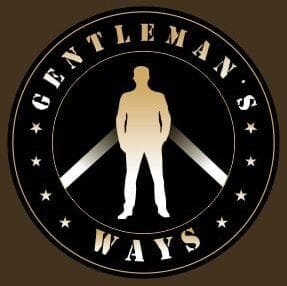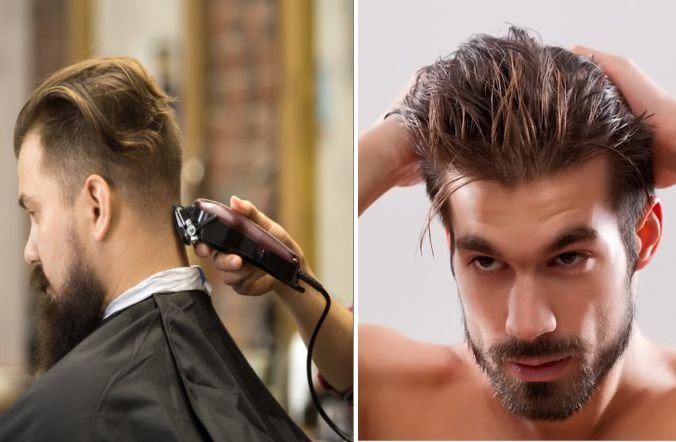Last updated on November 14th, 2025 at 10:17 am
Men’s haircuts and hairstyles shape your image and confidence. This ultimate guide breaks down styles, cuts, hair types, and face shapes to help you choose what suits you best.
You want your hair to look sharp, feel right, and match your style without overthinking it.
That’s where a good haircut and the right hairstyle come in.
Whether you’re heading to work, meeting someone special, or just walking down the street, how your hair looks can change how you feel.
This guide is built to help you find what works for your face shape, hair type, and daily routine.
Just what matters. You’ll see popular haircut names, what they look like, how to style them, and which ones suit your kind of hair.
From close fades to textured crops, pompadours to twists, you’ll get ideas that work.
If you’re ready to upgrade your look and want something real, this is where you start.
Let’s get into what fits you best.
Main Points
- Haircut vs. Hairstyle: A haircut shapes hair structure; a hairstyle styles it daily with products, reflecting personality and mood.
- Hair Type Impact: Straight, wavy, curly, or coiled hair affects cut choice, styling ease, and maintenance for optimal results.
- Face Shape Matters: Oval, round, square, or other face shapes guide haircut selection to enhance balance and facial features.
- Classic Cuts: Buzz, crew, and side part offer timeless, low-maintenance looks suitable for professional and casual settings.
- Modern Trends: Fades, textured crops, and longer styles provide versatility, blending classic cuts with contemporary flair and personalization.
- Cultural Influence: Celebrities and influencers drive trends, popularizing fades, braids, and retro styles, encouraging individual expression in grooming.
What are Men’s Haircuts and Hairstyles?
It’s easy to mix up men’s haircuts and hairstyles; many people do, even in professional spaces. But knowing the difference matters.
Here are the definitions of both:
What Is a Men’s Haircut?
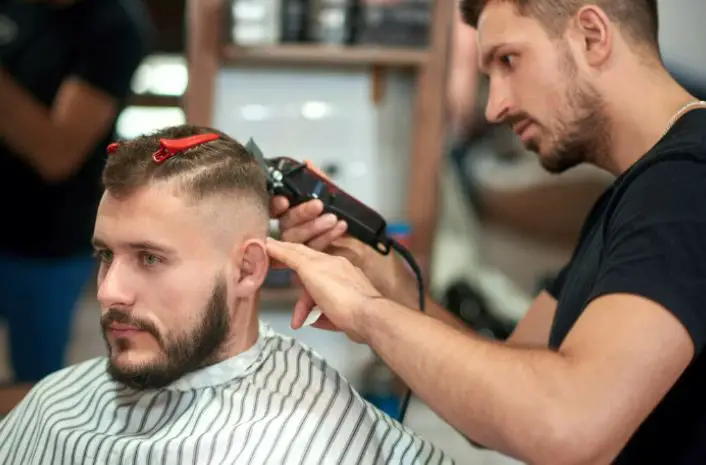
A men’s haircut is the way a barber or stylist trims and shapes a man’s hair to create a specific form, length, or structure.
It sets the foundation for how the hair sits on the head and can affect everything from hair volume to maintenance needs.
Common men’s haircuts include the fade, crew cut, taper, undercut, buzz cut, and layered cuts.
The right haircut should suit your face shape, hair type, and lifestyle. See a dedicated post on men’s haircuts.
What Is a Men’s Hairstyle?
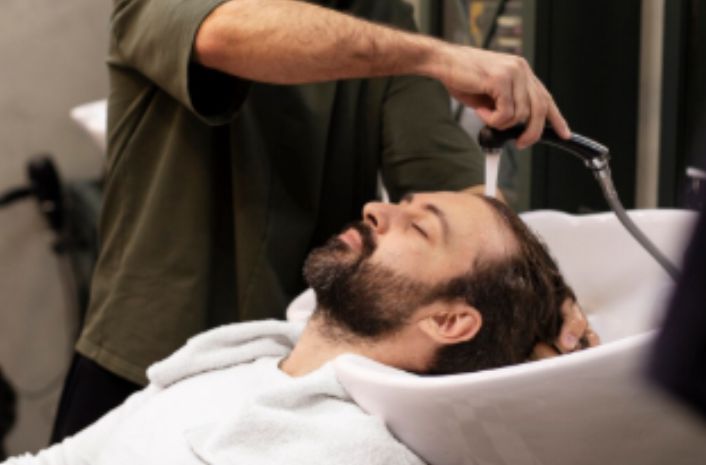
A man’s hairstyle is how the hair is arranged or styled after a haircut to create a finished look. It involves combing, shaping, or adding texture using tools like a blow dryer or products like pomade, wax, or mousse.
Popular men’s hairstyles include the quiff, slick back, pompadour, textured fringe, messy look, man bun, and side part.
A hairstyle brings out the personality in a haircut and helps define your image. Missed out post on men’s hairstyles? Check it out here.
Understanding the Difference between Men’s Haircut and Hairstyle
As mentioned above, men’s haircut is the actual cutting or trimming of hair that shapes its length and structure. It’s done by a barber or stylist and forms the base for styling.
A hairstyle, however, is how you arrange or style that cut using products, tools, or natural texture.
Think of the haircut as the base and the hairstyle as the finish. When you understand both, you can make better choices that fit your face, hair type, and the impression you want to leave.
While a haircut stays the same until it’s cut again, a hairstyle can change daily depending on mood or occasion.
The haircut controls growth and structure; the hairstyle controls the finished look.
Choosing the right haircut depends on your hair type and routine, while your hairstyle expresses your taste or fits specific situations.
Understanding both helps you get a style that fits your face, suits your lifestyle, and stays practical to maintain.
Differences Between Men’s Haircut and Men’s Hairstyle
| Aspect | Men’s Haircut | Men’s Hairstyle |
|---|---|---|
| Definition | The way your hair is cut and shaped using scissors or clippers | The way your hair is arranged or styled after the haircut |
| Purpose | Sets the structure, length, and form of your hair | Adds personality, polish, and variety to your look |
| Done By | Usually performed by a barber or stylist | Done by you or a stylist using hands, tools, and products |
| Tools Used | Clippers, scissors, razors | Combs, brushes, blow dryers, hair products |
| Examples | Buzz cut, fade, undercut, crew cut, layered cut | Slick back, quiff, pompadour, messy style, side part |
| Frequency | Needs regular touch-ups every few weeks | Can be changed daily or anytime based on mood or occasion |
| Longevity | Stays the same until the next haircut | Changes as often as you restyle it |
| Impact | Affects how your hair naturally falls and grows out | Controls how your haircut looks in the moment |
| Based On | Hair type, face shape, maintenance level | Hair type, face shape, and maintenance level |
| End Result | The raw structure of your look | The finished appearance you present to the world |
Related Posts
Grooming Hacks Every Gentleman Should Know
Side Part with Taper Fade: Styling, Variations and Maintenance
High and Tight Fade Haircut for Men
10 Best Men’s Hair Grooming Tools for Men
Understanding Your Hair Type and Texture
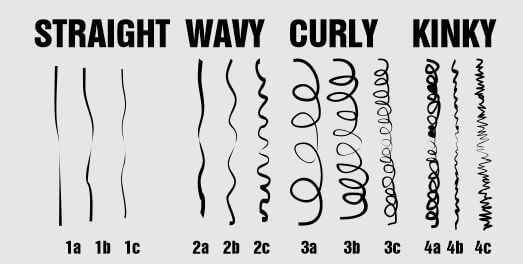
Understanding your hair type helps you choose better haircuts, styling products, and grooming routines that work.
Straight hair is smooth, easy to manage, and suits structured styles, but may need help with volume.
Wavy hair offers natural texture and flexibility; you can go casual or polished with just a little product.
Curly hair adds fullness and bounce but needs moisture and care to avoid frizz and breakage.
Coiled or kinky hair stands out with bold texture and shrinkage, so it benefits from moisture-rich products and styles that work with its shape, not against it.
Combination hair mixes textures on one scalp, so a custom cut and targeted products are key.
Hair thickness and density also matter; fine or sparse hair needs volume-building cuts, while thick or dense hair benefits from shaping and texture control.
Matching your haircut and routine to your hair type makes styling easier and helps you look your best.
See the full guide on men’s hair types and how they affect haircuts and hairstyles.
Men’s Haircut Types
Your haircut shapes how you look every day. Some styles are sharp and simple, while others give you space to express your personality, profession, or lifestyle.
Whether you like a clean and classic cut or something that turns heads, there’s a style to match.
Understanding the different types of men’s haircuts can help you make better decisions when visiting your barber.
Below are the main categories of haircuts, each offering unique looks, benefits, and levels of upkeep.
Classic Cuts: Timeless and Clean
These haircuts never go out of style. They’re simple, clean, and versatile enough for work, social events, or everyday routines.
Great for men who prefer structured grooming without too much flair.
Buzz Cut
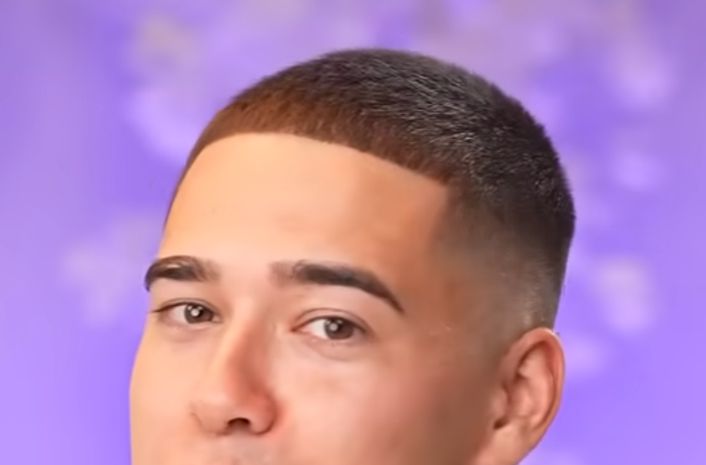
The buzz cut is the ultimate low-maintenance haircut. It’s clipped close to the scalp using clippers set to a short guard length.
This style works well for men who prefer a clean, no-fuss look and want to avoid styling products.
Ideal for athletic lifestyles, military standards, or hot climates, the buzz cut also brings out facial features and bone structure.
It’s sharp, masculine, and can be refreshed easily at home or with a quick barber visit. See a dedicated post on the buzz cut.
Crew Cut
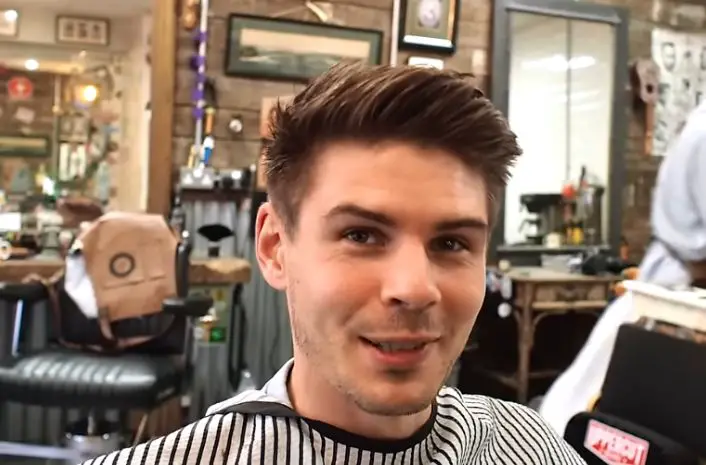
The crew cut is a classic short hairstyle with slightly more length on top and shorter sides.
It offers just enough room to add a little product for light styling, yet remains easy to maintain.
This cut is neat, tidy, and fits nearly any face shape or lifestyle, whether formal or casual.
The crew cut strikes a balance between professional and laid-back, making it ideal for everyday wear and men who want a versatile, timeless look. See a detailed post on crew cut here.
Ivy League
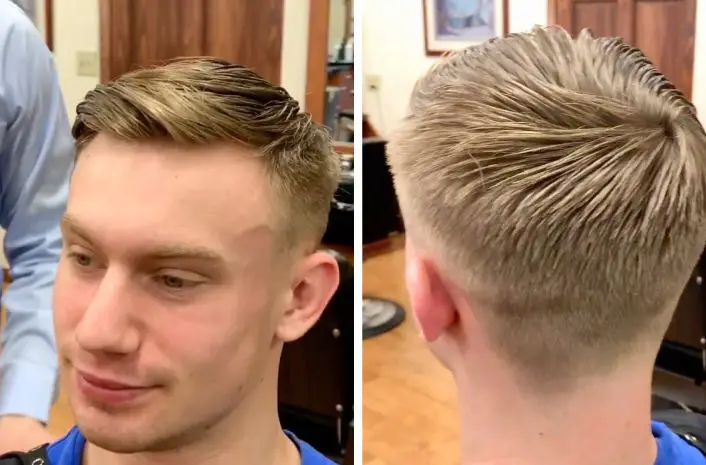
An Ivy League cut is a polished variation of the crew cut. It leaves the top a little longer to allow side-part styling, offering a mix of control and class.
It’s the go-to for professionals who want a clean-cut yet fashionable appearance.
Whether slicked to the side or lightly tousled, the Ivy League cut brings charm to both casual weekends and office meetings.
It’s smart, adaptable, and suitable for those who appreciate structure without being stiff.
Caesar Cut
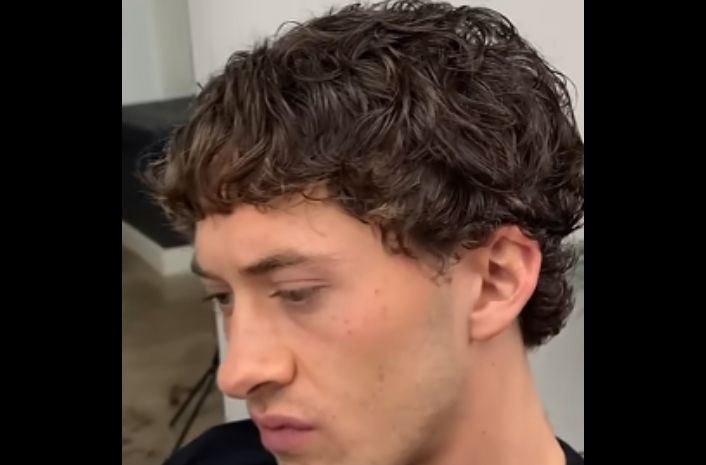
The Caesar cut keeps the hair short all over, with a small horizontal fringe across the forehead.
Inspired by Julius Caesar, this ancient-meets-modern style is easy to maintain and great for hiding receding hairlines.
It’s simple, structured, and doesn’t need heavy grooming. This cut suits guys who like a strong, confident look with minimal styling effort.
Best for straight or slightly wavy hair, the Caesar offers a bold shape that works in both professional and casual settings.
Butch Cut
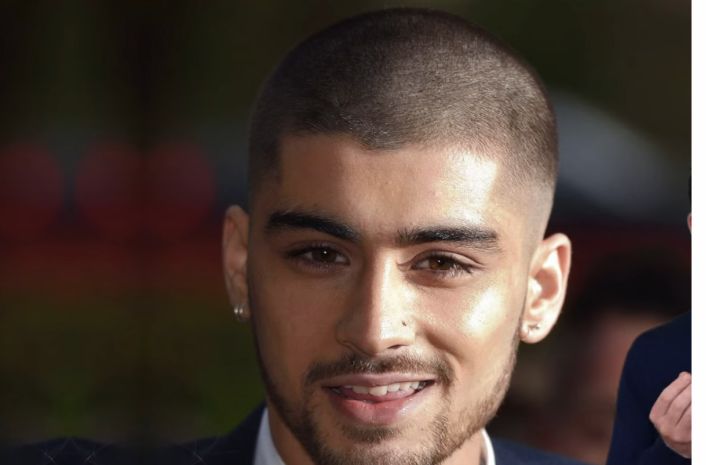
The butch cut is a uniform-length haircut that’s slightly longer than a buzz but still super low maintenance.
It gives a fuller appearance than a buzz cut and works well for active lifestyles or men who prefer a no-styling routine.
It’s masculine, neat, and easy to manage without needing product or regular touch-ups.
Great for men who want a strong, utilitarian haircut, the butch cut also complements a variety of face shapes and hair textures.
Flat Top
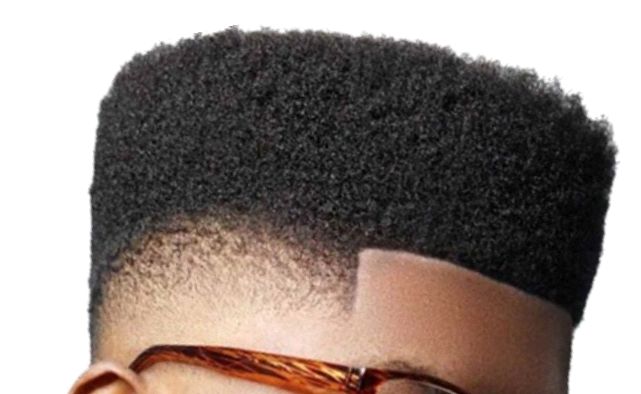
The flat top is all about precision and attitude. The hair is cut to stand vertically and form a flat, horizontal shape across the top, often with sharply faded sides.
It’s a bold, angular haircut that was iconic in the late ’80s and early ’90s, especially in Black culture.
Today, it’s worn as a high-impact statement cut. Best suited for coarse or tightly curled hair, the flat top shows off confidence and clean lines with every edge.
Side Part
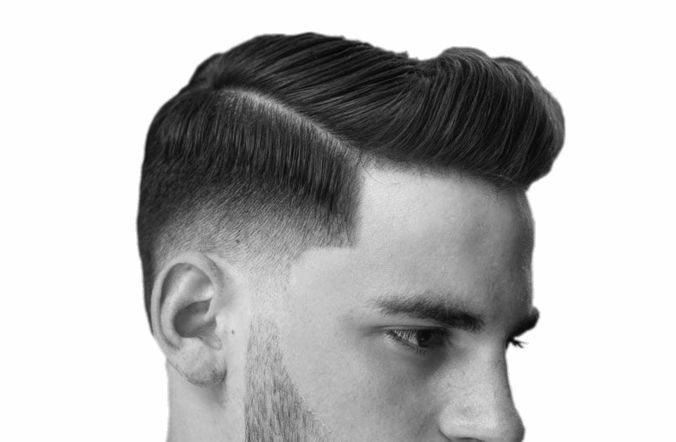
The side part is a simple and timeless style that uses a clean parting to direct the hair to one side.
Whether styled with pomade for a slick finish or left more natural, this cut looks professional yet approachable.
It flatters most face shapes and works for both thick and thin hair.
The side part is perfect for men who like structure but don’t want anything too trendy. It’s classic, practical, and always in good taste.
Taper Cut
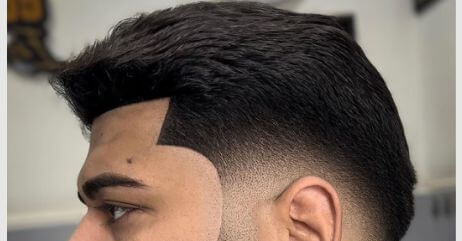
The taper cut gradually shortens the hair from the top down to the neckline and ears.
Unlike a fade, the taper is more subtle and blends into the skin without going too short. This makes it ideal for business settings while still keeping things stylish and neat.
The taper suits almost every haircut and face shape, making it one of the most versatile base cuts. It’s neat without being overly sharp and great for low-key elegance.
Modern Cuts: Fresh and Flexible
Modern haircuts embrace contrast, texture, and styling versatility. These cuts often use fades, disconnections, or bold shapes to stand out or match current trends.
Fade Haircuts
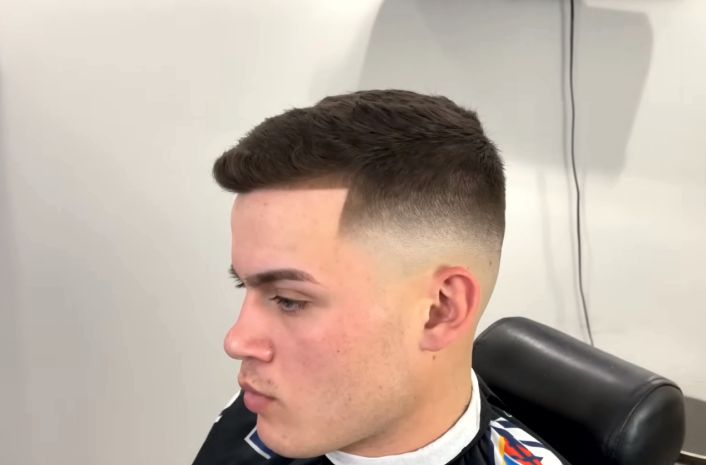
Fade haircuts involve gradually decreasing the length of hair from the top of the head down to the sides and neck.
Variations include low, mid, high, skin, bald, drop, burst, and temple fades. Each type changes how dramatic or subtle the blend looks. Fades are usually paired with textured tops or detailed shapes.
They’re popular because they suit most hair types and can easily complement other styles, adding sharpness, freshness, and a modern edge to your overall appearance.
Undercut
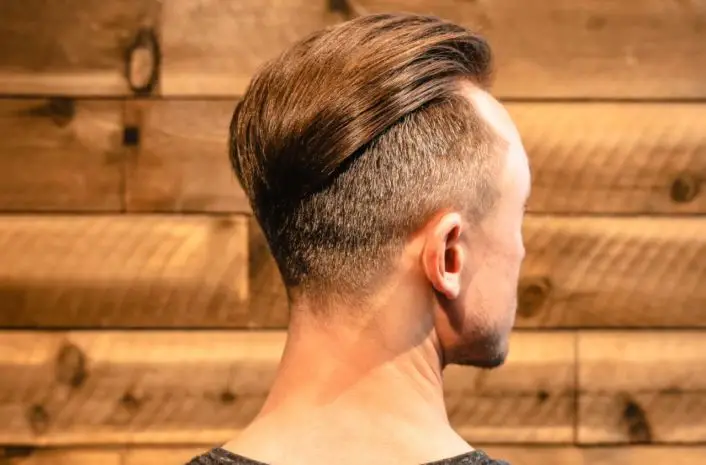
The undercut features short or shaved sides with a longer top. There’s a clear difference in length, but it still blends smoothly.
This cut gives you styling freedom, whether you slick it back, part it, or let it fall naturally.
The undercut works on straight, wavy, or curly hair and adds bold structure to the face.
It’s edgy but wearable and is often combined with pompadours, textured crops, or quiffs for a confident, stylish finish.
Disconnected Undercut
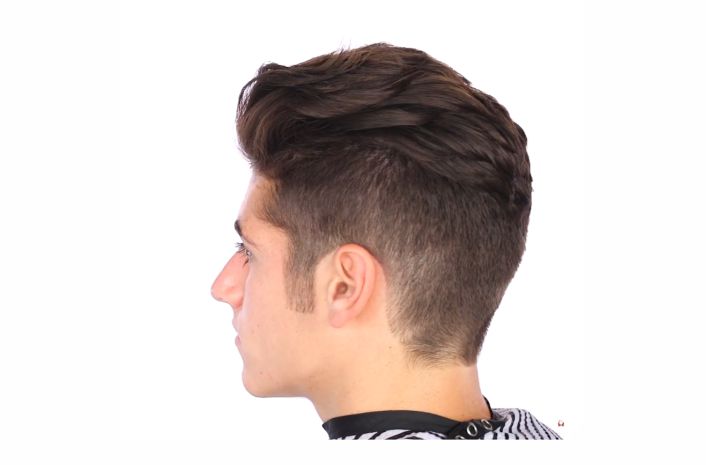
A disconnected undercut sharply contrasts the long top and very short or shaved sides with no blending at all.
The difference in length is noticeable and creates a high-impact look that’s more daring than the regular undercut.
It’s great for men who want their hair to make a statement. This style pairs well with voluminous tops, pomps, or slicked-back finishes.
It’s modern, expressive, and best for those who don’t mind standing out.
Textured Crop (French Crop)
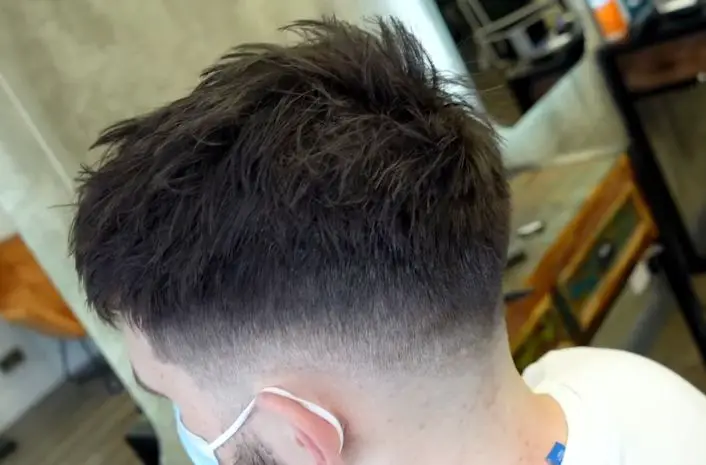
The textured crop, also known as the French crop, features a short fringe in front with a textured, choppy top.
It’s usually paired with a fade or taper for contrast. This haircut is practical yet stylish and works great with straight or wavy hair.
It’s low-maintenance, requires minimal styling, and provides a youthful, modern appearance.
If you like your hair short but want to keep some edge and personality, the textured crop is a smart, trendy option.
Comb Over Fade
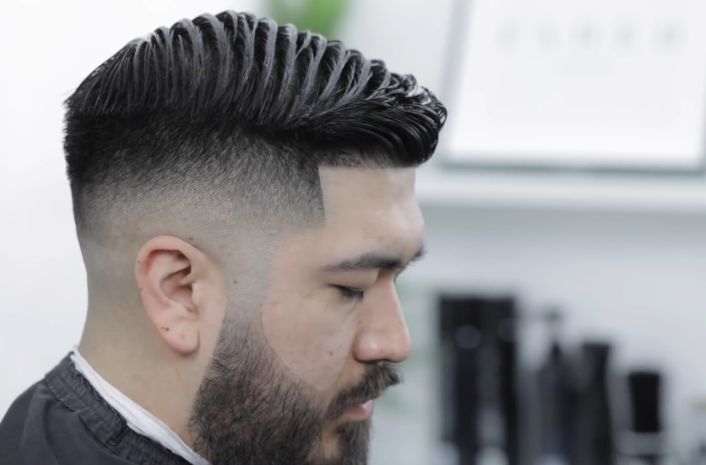
The comb-over fade is a modern take on the classic comb-over. Hair is swept to one side on top while the sides fade down cleanly.
This style works well for guys with medium to thick hair and looks sharp with a part.
You can keep it formal or make it casual depending on how you style it.
It’s polished, structured, and versatile, great for professionals who want a hairstyle that’s both trendy and office-ready.
Mohawk
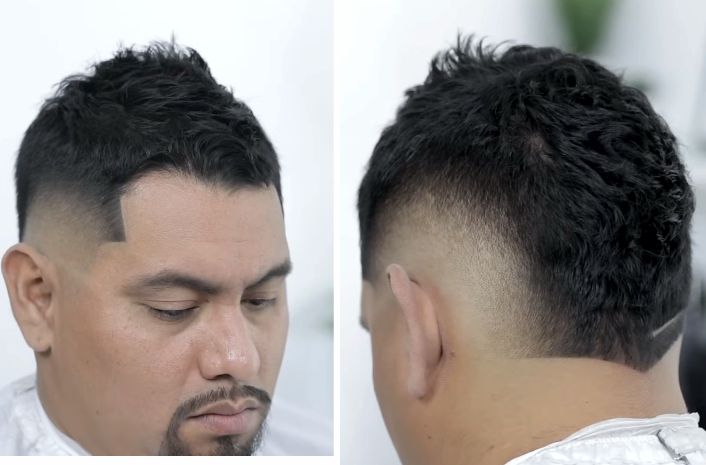
The mohawk features a strip of longer hair running from the front to the back of the head, with the sides either shaved or very faded.
It’s bold, punk-inspired, and all about attitude. Today’s mohawks come in many forms, from clean and narrow to wide and textured.
It suits men who want to make a strong personal statement and aren’t afraid of attention. Ideal for creative types or free spirits, it’s a true expression of individuality.
Faux Hawk
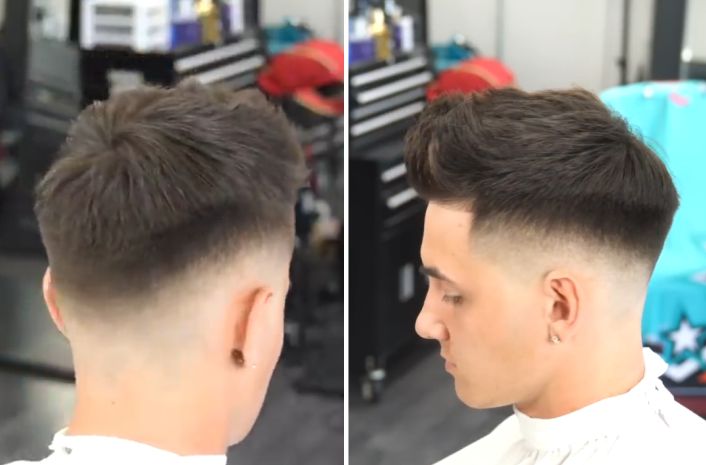
The faux hawk mimics the mohawk but is more wearable for daily life. Instead of shaved sides, you get a shorter fade or taper, and the top is styled upward toward the center.
It’s less extreme but still edgy, giving you versatility to style it sharp or relaxed. The faux hawk suits many face shapes and works with most hair types.
It adds attitude without sacrificing practicality, perfect for men who like some flair but want flexibility.
Hard Part
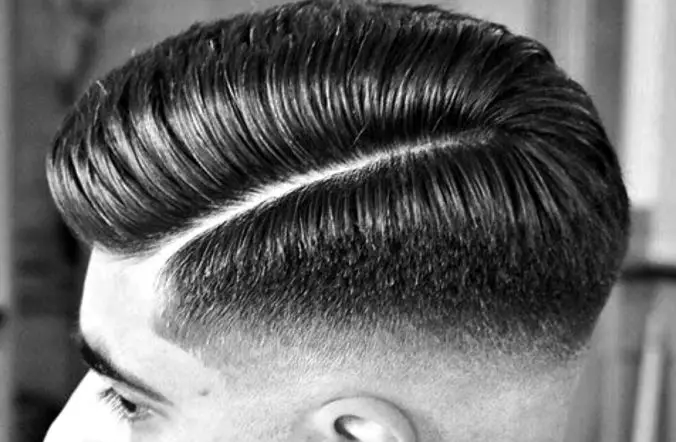
The hard part is a defined line shaved into the scalp to emphasize the parting of your hair.
It can be added to a variety of cuts, like side parts or comb-overs, to create a crisp, bold appearance.
This small detail changes the entire haircut, adding sharpness and structure. It works great with fades, undercuts, or any clean style.
The hard part shows attention to detail and adds a modern, stylish touch to classic looks.
Men’s Hairstyles
How you style your hair adds the final touch to your look. While your haircut sets the base, your hairstyle reflects your grooming habits, mood, and lifestyle.
Whether you prefer sharp lines or relaxed texture, the way you wear your hair each day says a lot about you.
Here are some of the most popular hairstyles men go for, and what makes each one work.
Pompadour
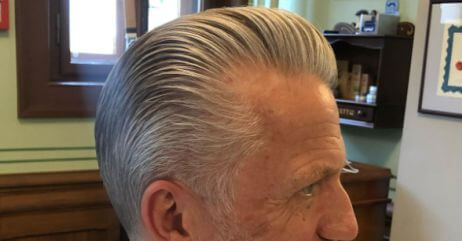
The pompadour keeps the top longer and pushes it upward and back to create volume, while the sides stay short or faded.
It works well with straight or wavy hair and can suit both formal and casual styles.
You’ll need a blow dryer and styling product to maintain its height. The modern pompadour can be sleek or messy, depending on how you wear it.
It’s a confident choice that adapts to different face shapes and occasions.
Quiff
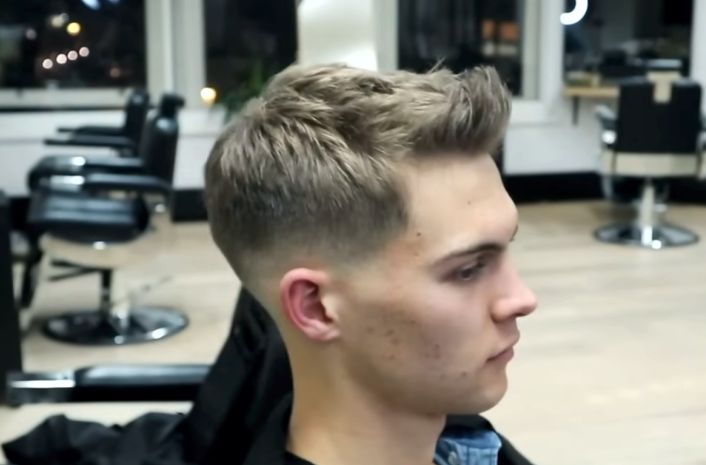
The quiff pushes the front of your hair up and back, blending volume with a natural wave or curve.
It pairs well with fades or undercuts and adds a casual but intentional finish.
This style flatters most face shapes, especially round or square, and works for men who want polish without looking stiff.
With a bit of wax or pomade, you can style it quickly each morning and reshape it throughout the day if needed.
Slick Back
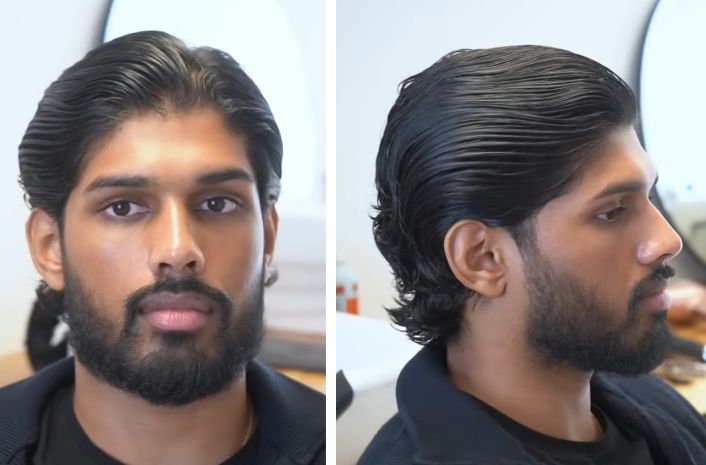
The slick back lays the hair flat and combs it straight back using gel or pomade for a sharp, clean finish.
Often combined with a fade or undercut, it creates a bold contrast between the top and sides.
Best for straight or slightly wavy hair, it suits formal settings and professional appearances.
It does require product and regular upkeep to hold its shape, but it sends a clear message of control and attention to grooming.
Side Part
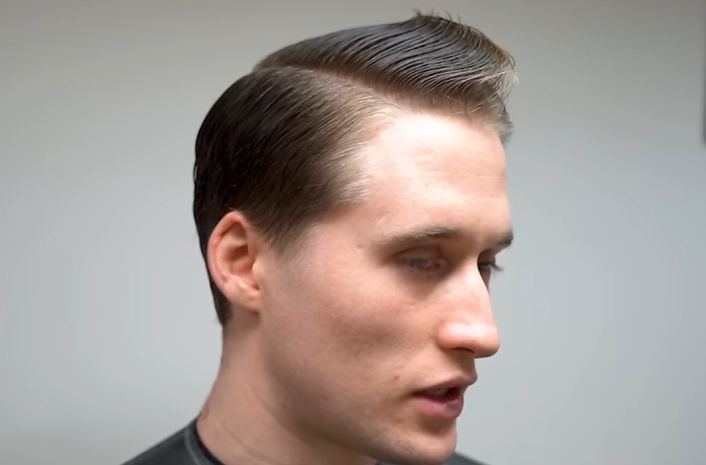
The side part separates your hair along one side, giving you a neat and structured appearance.
It works for most hair types, especially straight or wavy, and fits both formal and everyday looks.
Whether you wear it with a tight fade or medium length, it keeps your profile sharp.
This style needs a bit of product to hold the part in place and looks best when maintained with regular trims. It’s easy, polished, and timeless. See a dedicated post on the men’s side part hairstyle.
Faux Hawk
The faux hawk gives you mohawk vibes without shaving the sides. The top is styled into a ridge or peak, and the sides are short or faded.
It strikes a balance between bold and wearable, making it ideal for men who want edge without breaking dress codes.
Great for thick or textured hair, the style holds best with gel or wax. It’s a confident, modern pick that works for nights out or creative workspaces.
Messy Textured
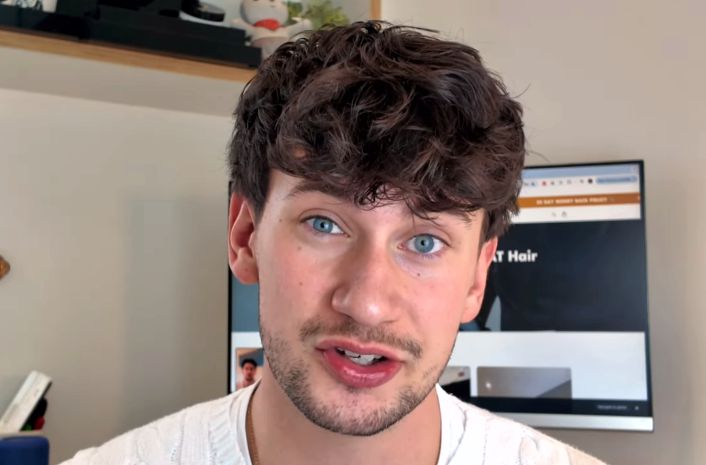
The messy textured look embraces a carefree, layered finish using paste, clay, or sea salt spray.
It’s ideal for thick, wavy, or layered hair and thrives with a good cut that does most of the work.
You don’t need precision, just a tousle with your fingers gives it shape.
Perfect for men with busy schedules, it offers a relaxed and modern appearance without looking lazy.
It’s low-effort but gives the impression of intentional style.
Crew Cut with Texture
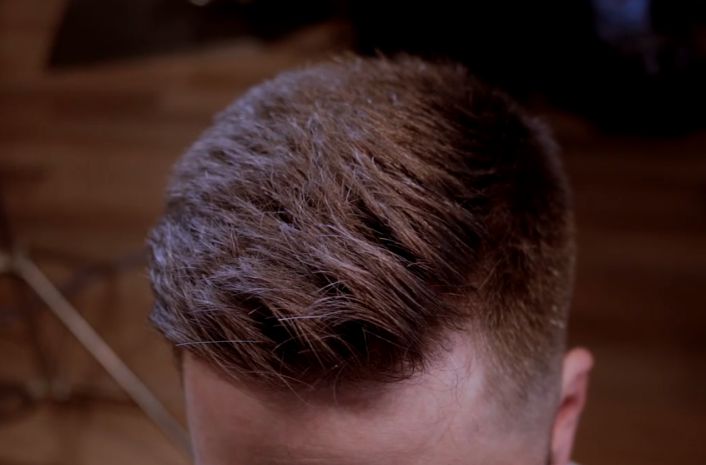
The crew cut keeps things short, but adding texture on top gives it extra dimension. It’s clean, minimal, and sharp while still having a bit of flair.
This style is a favorite for men who want something easy but not boring.
It’s practical for warmer weather or active lifestyles and only needs a touch of product if you want definition.
The textured crew cut is neat enough for work but casual enough for downtime.
Buzz Cut
The buzz cut is a uniform, low-maintenance style that’s clipped close to the scalp.
It’s ideal if you want something easy, clean, and sharp. Because it exposes your head shape, it suits those with symmetrical features or strong bone structure.
It also works well for men experiencing thinning hair. The buzz cut doesn’t require styling, just regular clippers to keep it tidy.
It’s all about simplicity, confidence, and letting your natural features stand out.
Curly Top
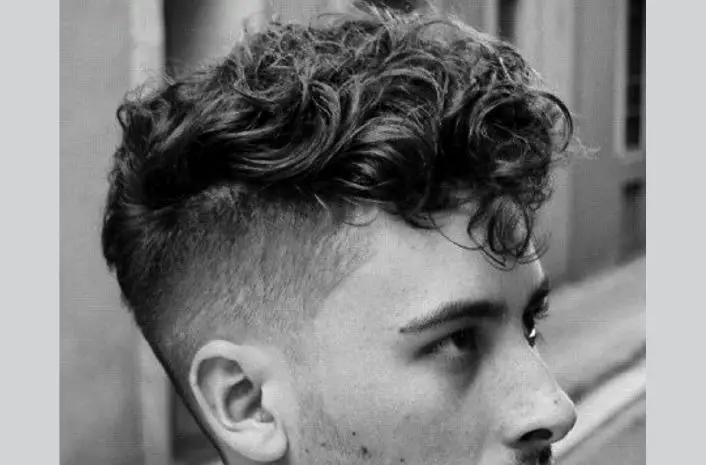
The curly top keeps the length on top to showcase natural curls, with faded or tapered sides to frame the face.
It’s great for men who want to embrace their texture instead of hiding it.
Curl-enhancing products like creams or leave-in conditioners help define the shape and fight frizz.
This style gives movement and volume while still looking well-groomed.
Regular shaping trims are important to keep it tidy without losing the curl’s natural bounce.
Man Bun
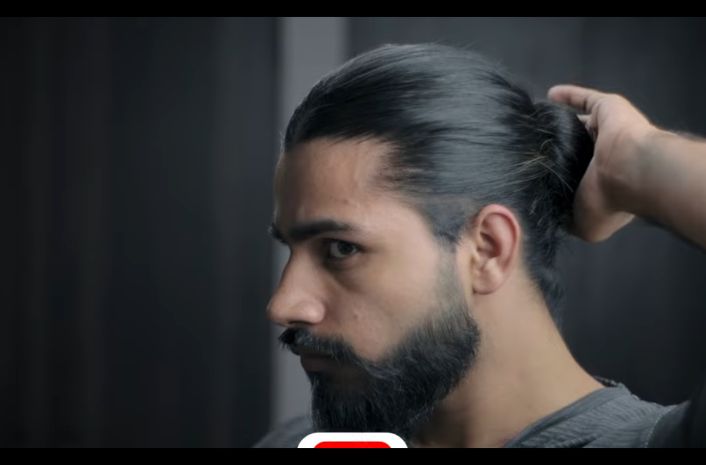
The man bun gathers long hair into a bun at the crown or back of the head, either neat or messy.
It suits straight, curly, or wavy hair and works for active men who want control without cutting length.
The bun can reflect different moods depending on how tightly or loosely you tie it.
Maintenance means regular washing and conditioning, along with trimming the ends to avoid breakage. It’s laid-back but still organized.
Current Trends in Men’s Haircuts and Hairstyles
Men’s hair trends keep changing with culture, fashion, and personal style. Lately, you’ll notice a return to classic cuts, revamped with fresh details that fit today’s look.
Textured Hairstyles
More men are leaning into texture. You’re seeing layered cuts, choppy tops, and rough finishes that bring out natural volume.
These styles work well with straight, wavy, or curly hair and don’t need to be perfect.
Products like matte clay or sea salt spray help give it shape. Textured crops, messy pompadours, and tousled fades are everywhere now; they look sharp without looking forced.
Modern Fades
The fade keeps evolving. From low and subtle to high and bold, it’s still one of the most requested cuts.
You can match it with nearly any style, crew cut, curly top, or slick back. What makes the fade so popular is how clean it looks while giving your haircut a clear outline.
Barbers are getting creative with skin fades, burst fades, and even drop fades for a personal touch.
Longer Hair
Longer styles are becoming more common, especially with men who want freedom to switch between loose and tied-up looks.
Shoulder-length cuts, layered shags, and the man bun are back. These styles let you grow out your hair without looking untidy.
If you want to stand out without saying much, longer hair does the job. Just keep the ends trimmed and use conditioner to maintain shape and flow.
The Comeback of Classics
Classic cuts like the pompadour, side part, and slick back haven’t gone anywhere; they’ve just been refreshed.
You’ll see them paired with fades or textured tops for a more current vibe.
These styles give structure and polish without trying too hard. If you prefer something timeless but still want to look up to date, this mix of old and new works.
It’s clean, masculine, and fits both sharp and casual outfits.
Cultural Influence
Celebrities and trendsetters are shaping what’s popular. Athletes rock fades with sharp lines. Musicians show off braids, twists, or locs.
Influencers bring everything from retro mullets to modern quiffs. These public figures give you ideas and show you that personal expression is always part of good style.
Whether it’s a red carpet or social feed, their choices affect what men are asking for in barbershops.
Freedom to Personalize
The biggest shift today is freedom. You don’t have to follow rules about what men’s hair should look like.
You can keep it short and sharp, wear it long and loose, or go bold with a fade and design. The goal is to wear what fits your lifestyle, your face, and your mood.
With so many styles and tools out there, you get to choose what works for you, not just what’s trending.
Frequently Asked Questions
What are the best men’s haircuts and hairstyles for a round face shape?
Go for quiffs or pompadours with short sides to add height, avoiding rounded styles that widen the face. These cuts help create structure and give the appearance of a longer face.
How do I maintain men’s haircuts and hairstyles with curly hair?
Use curl creams, leave-in conditioners, and regular trims to define curls, reduce frizz, and maintain shape daily. Keeping your curls hydrated is key to a sharp and healthy look.
Which men’s haircuts and hairstyles suit a low-maintenance lifestyle?
Buzz cuts, crew cuts, or fades are ideal, requiring minimal styling and upkeep. These styles are perfect if you’re always on the move or prefer a clean look without daily effort.
How can I choose men’s haircuts and hairstyles for my hair type?
Match your cut to your natural texture: straight hair works with sleek styles, wavy hair suits textured crops, curly hair pairs well with fades, and coiled hair looks great in twists or short shapes.
What are the trending men’s haircuts and hairstyles in 2025?
Textured crops, modern fades, and longer layered styles are leading trends. These cuts blend timeless shapes with modern touches, giving you flexibility and a sharp, updated appearance.
Conclusion
Men’s haircuts and hairstyles affect more than just how you look; they influence how you carry yourself.
Understanding the difference between the two can shape your image and boost your confidence.
When you know your hair type and face shape, choosing styles becomes easier and more rewarding.
While trends shift, classic cuts stay relevant, and keeping up gives you new ideas without losing your edge.
Regular trims and the right products keep everything in place. Grooming isn’t extra, it’s part of feeling good and looking sharp.
This guide is here to help you experiment, find your style, and wear it with purpose.
The right men’s haircut and hairstyle don’t just change your look, they help you own it.
Men’s haircuts and hairstyles can lead to discovering a signature look that reflects personality and boosts self-confidence.
By utilizing the insights from this guide, you can make educated choices about your hair, leading to an empowered sense of personal style and appearance.
References
Pyo Merez is a men’s lifestyle enthusiast and writer about the gentleman’s place and impact on society. Raised by a distinguished gentleman dad, he offers unique insights into how the mind of a gentleman works and how societal norms shape gentlemen’s identity and vice versa.
Through his insightful articles, Pyo taps into the depths of gentleman culture to provide perspectives on etiquette and manners in modern society.
